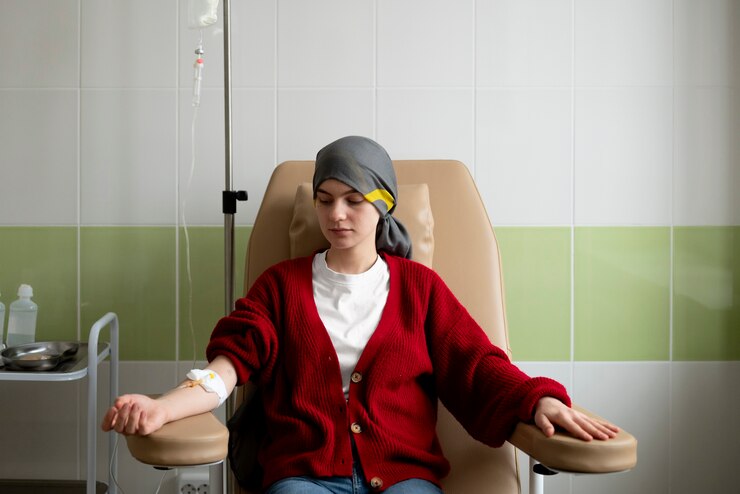
Introduction
Chemotherapy is a widely used medical treatment for various types of cancer. It plays a crucial role in the fight against this devastating disease, but many people don’t fully understand how chemotherapy works. In this comprehensive guide, we will delve into the intricate details of chemotherapy, explaining its mechanisms, side effects, and the role it plays in the battle against cancer.
Chemotherapy: A Powerful Weapon Against Cancer
Cancer is a complex group of diseases characterized by the uncontrolled growth and spread of abnormal cells. Chemotherapy is a systemic treatment that uses drugs to destroy or inhibit the growth of these malignant cells. Unlike surgery, which aims to remove cancerous tumors, or radiation therapy, which uses high-energy beams to target specific areas, chemotherapy is a versatile and broad-spectrum approach.
Understanding the Basics of Chemotherapy
- Cellular Attack:
- Chemotherapy works by targeting rapidly dividing cells. Cancer cells divide and multiply much faster than normal cells, making them a prime target.
- However, chemotherapy doesn’t discriminate between cancer cells and healthy cells, which is why it often leads to side effects.
- Modes of Administration:
- Chemotherapy drugs can be administered in various ways, including orally (pills or liquids), intravenously (IV), intramuscularly (IM), and even topically.
- The choice of administration method depends on the specific cancer, the type of drug, and the patient’s overall health.
- Treatment Plans:
- Chemotherapy treatment is typically delivered in cycles. Patients receive a set number of treatments over a specific timeframe, followed by a recovery period.
- The cycle allows time for healthy cells to recover between treatments, reducing the severity of side effects.
Chemotherapy: Mechanisms of Action
- DNA Damage:
- Many chemotherapy drugs work by damaging the DNA within cancer cells. DNA damage prevents the cells from dividing and multiplying, eventually leading to cell death.
- Common DNA-damaging chemotherapy drugs include cisplatin and cyclophosphamide.
- Cell Cycle Inhibition:
- Some chemotherapy drugs disrupt the cell cycle, preventing cancer cells from progressing through their growth phases.
- Drugs like paclitaxel and vinorelbine inhibit microtubules, structures essential for cell division.
- Targeted Therapies:
- In recent years, there has been significant progress in developing targeted therapies that specifically aim at proteins or pathways essential for cancer cell survival.
- Targeted therapies, like imatinib for chronic myeloid leukemia, have less impact on healthy cells, resulting in fewer side effects.
- Immunomodulation:
- Immunotherapy, a newer approach in cancer treatment, harnesses the power of the immune system to attack cancer cells.
- Checkpoint inhibitors, like pembrolizumab and nivolumab, prevent cancer cells from evading the immune system’s detection.
The Role of Chemotherapy in Cancer Treatment
- Curative Intent:
- Chemotherapy can be used with curative intent, aiming to completely eliminate cancer from the body. This is often the case with certain early-stage cancers.
- Adjuvant Therapy:
- In cases where surgery or radiation therapy removes most of the cancer, chemotherapy may be administered as adjuvant therapy to eliminate any remaining cancer cells.
- Neoadjuvant Therapy:
- In some instances, chemotherapy is given before surgery or radiation to shrink tumors and make them more manageable.
- Palliative Care:
- Chemotherapy is also used to relieve symptoms and improve the quality of life for patients with advanced or metastatic cancer.
- It can help slow the progression of the disease, alleviate pain, and reduce tumor size.
The Side Effects of Chemotherapy
While chemotherapy is a powerful weapon against cancer, it often comes with a range of side effects due to its impact on healthy cells. These side effects can vary from person to person and depend on the type and dosage of chemotherapy drugs used. Common side effects include:
- Nausea and Vomiting: Antiemetic medications can help manage these symptoms.
- Hair Loss: Many chemotherapy drugs affect hair follicles, leading to hair loss. Hair often grows back after treatment ends.
- Fatigue: Chemotherapy can lead to extreme tiredness, which can last for weeks or even months.
- Anemia: A decrease in red blood cells can cause fatigue, weakness, and shortness of breath.
- Weakened Immune System: Chemotherapy can reduce the body’s ability to fight off infections, making patients more susceptible to illness.
- Nerve Damage: Some chemotherapy drugs can cause peripheral neuropathy, leading to tingling, numbness, and pain in the extremities.
- Blood Clotting Problems: Certain chemotherapy drugs can affect the body’s ability to clot blood, increasing the risk of bleeding.
- Gastrointestinal Issues: Diarrhea and constipation are common side effects, along with mouth sores and changes in taste.
- Skin and Nail Changes: Skin can become dry and discolored, and nails may become brittle or develop ridges.
- Emotional and Psychological Effects: Coping with a cancer diagnosis and the side effects of treatment can lead to emotional distress and anxiety.
Managing Side Effects
The management of chemotherapy side effects is an essential part of cancer care. Healthcare providers work closely with patients to alleviate symptoms and improve their quality of life during treatment. Supportive care measures may include medications, dietary adjustments, physical therapy, and emotional support.
The Future of Chemotherapy
The field of oncology is continually evolving, and chemotherapy is no exception. Researchers are constantly working to develop more effective and targeted chemotherapy drugs with fewer side effects. They are also exploring combinations of chemotherapy with other treatments, such as immunotherapy and targeted therapies, to improve outcomes and reduce toxicity.
Conclusion
Chemotherapy, while accompanied by significant side effects, remains a potent tool in combating cancer, saving countless lives. A nuanced understanding of its mechanisms and varied applications empowers patients and healthcare providers to make informed decisions. As medical research progresses, the future holds promise for improved and targeted chemotherapy treatments, ultimately elevating the prognosis for cancer patients globally. For more information, consider consulting experts like Dr. Jagdish Shinde at https://www.cancercarepune.com/.




